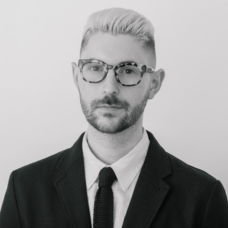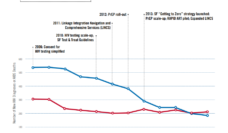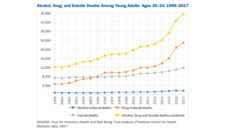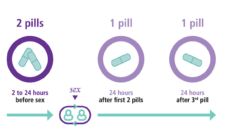AIDS has shaped the health of generations. During the 1980s and 1990s, the wellbeing of Baby Boomers and Generation X depended on LGBT activists who demanded equality, marched for access to health care, and revolted against discrimination. These activists set out to slow the spread of HIV and transformed public health. They forced the world to pay attention to threats to LGBT health.
But the HIV epidemic has changed in the new millennium. Investments in prevention now focus on pre-exposure prophylaxis (PrEP) and on at-home testing. And investments in long-acting treatments focus more on finding a functional cure that will render HIV undetectable and harmless than on eradicating the virus.
The health providers, researchers, and activists of Generation Y – also known as Millennials – are leveraging prevention, testing, and treatment innovations to better inform laws, policies, and programs addressing the HIV epidemic. They’re surviving a new HIV epidemic: one without the devastating loss of life we saw in the 1980s and 1990s, but an epidemic still influenced by homophobia, transphobia, racism, and gaps in accessing affordable health care.
Dr. Quarraisha Abdool Karim, Professor of Epidemiology at the Columbia University Mailman School of Public Health, underscores that there is a new generation of young people at risk of acquiring HIV. In her eyes, Millennials’ demand “to be shaping that response is absolutely appropriate.”
Sam Bunting is a 24-year-old medical student at the Chicago Medical School and an example of this generation’s experiences around HIV. He struggled with coming out as gay as an undergraduate and faced barriers filling a prescription for PrEP in his home state of Ohio. There were no providers prescribing PrEP in rural Ohio, so Bunting drove an hour to the Cleveland Clinic for consultations with one of the few providers in the state prescribing PrEP.
“We often are not offered a seat at the table when it comes to making big decisions or brainstorming new ideas.”
Bunting’s personal experience had to student-led education and activism around PrEP. With a team of students, he designed a curriculum to train health providers about PrEP and implemented it in Utah, Kentucky, Louisiana, New Jersey, Georgia, and Alabama. “You have to know your audience,” said Bunting. “Where is the incidence of HIV the highest? 25 to 30-year-olds. If you want to make actionable efforts and inroads towards reducing and eventually ending HIV, then you should be more than happy to leverage people who are in the demographic who can translate the science to people who need it.”
Aron Thiim, a 24-year-old Senior Research Assistant at Fenway Health, develops behavioral interventions for HIV self-care. His work underscores the importance of tackling racism in health care, particularly when HIV prevention and treatment efforts must now target young, Black, gay, bisexual, and other men who have sex with men.
“We’re really trying to advance our institute and our research practices to allow people who are racially and ethnically diverse to come into our doors and feel more welcome,” said Thiim. “Historically, we haven’t provided resources in those communities that are disproportionately affected by the HIV epidemic.”
Gunnar Mattson is a 22-year-old Manager of Health Economics and Market Access at Johnson & Johnson Global Public Health. He believes, while young people pitch big, bold ideas and publish promising research to inform the response to HIV, they still face multiple barriers when trying to make their voices heard.
“Young people are underrepresented [in the HIV response],” said Mattson. “We often are not offered a seat at the table when it comes to making big decisions or brainstorming new ideas.”
Mattson argues that leaving out the voices of young people infected and affected by HIV marginalizes a population yearning to improve the response to HIV which will continue to shape the health of generations. The public’s health and wellbeing now depend on the LGBT activists of the epidemic’s early days to pass the baton to Millennials. This emerging generation must again force the world to pay attention to threats to LGBT health.
Photo by Braden Collum on Unsplash














